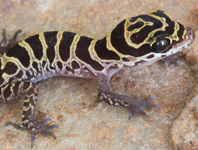Abstract
We record Raorchestes parvulus (Boulenger, 1893) for the first time from China based on six specimens collected from southern Yunnan. Phylogenetically these individuals were placed in a clade with R. parvulus from Southeast Asia and pairwise genetic distances in DNA sequences of the mitochondrial 16S rRNA gene ranged from 0 to 3.1% within the clade. Morphologically these specimens agree with R. parvulus in a series of characters including body size small, a large external vocal sac, vomerine teeth absent, snout slightly shorter than the diameter of the orbit, canthus rostralis indistinct, interorbital space broader than the upper eyelid, tympanum indistinct, fingers free, toes webbed at the base, an inner metatarsal tubercle, tibio-tarsal articulation reaches eye, small warts on the dorsal surfaces of body and limbs, throat smooth, belly granular, a dark triangular blotch between the eyes, a butterfly-like dark band on the back, a dark blotch on each side of lumbar region, and more or less distinct dark bars across limbs. Obvious intraspecific variation in the color pattern occurs within the population. It is possible that previous records of Raorchestes longchuanensis (Yang and Li, 1979) from southern Yunnan might be misidentification of R. parvulus.
References
Biju, S.D., Shouche, Y., Dubois, A., Dutta, S.K. & Bossuyt, F. (2010) A ground-dwelling rhacophorid frog from the highest mountain peak of the Western Ghats of India. Current Science, 98, 1119‒1125.
Bossuyt, F. & Dubois, A. (2001) A review of the frog genus Philautus Gistel, 1848 (Amphibia, Anura, Ranidae, Rhacophorinae). Zeylanica, 6, 1–112.
Boulenger, G.A. (1893) Concluding report on the reptiles and batrachians obtained in Burma by Signor L. Fea dealing with the collection made in Pegu and the Karin Hills in 1887‒88. Annali del Museo Civico di Storia Naturale di Genova, Serie 2, 13, 304‒347.
Chan, K.O., Grismer, L.L. & Brown, R.M. (2018) Comprehensive multi-locus phylogeny of Old World tree frogs (Anura: Rhacophoridae) reveals taxonomic uncertainties and potential cased of over- and underestimation of species diversity. Molecular Phylogenetics and Evolution, 127, 1010–1019.
https://doi.org/10.1016/j.ympev.2018.07.005
Fei, L. (1999) Atlas of Amphibians of China. Henan Publishing House of Science and Technol-ogy, Zhengzhou, 432 pp.
Fei, L., Ye, C. & Jiang, J. (2012) Colored Atlas of Chinese Amphibians and Their Distributins. Sichuan Publishing House of Science and Technol-ogy, Chengdu, 619 pp.
Frost, D.R. (2018) Amphibian Species of the World: and Online Reference. Version 6.0. Ameri-can Museum of Natural History, New York, USA. Available from: http://research.amnh.org/herpetology/amphibia/index.html/ (accessed 18 August 2018)
Grosjean, S., Ohler, A., Chuaynkern, Y., Cruaud, C. & Hassanin, A. (2015) Improving biodiversity assessment of anuran amphibians using DNA barcoding of tadpoles. Case studies from Southeast Asia. Comptes Rendus Biologies, 338, 351–361.
https://doi.org/10.1016/j.crvi.2015.03.015Huelsenbeck, J.P & Ronquist, F. (2001) MrBayes: Bayesian inference of phylogeny. Bioinformatics, 17, 754–755.
https://doi.org/10.1093/bioinformatics/17.8.754
Kou, Z.T. (1990) A new species of genus Philautus (Amphibia: Rhacophoridae) from Yunnan, China. In: Zhao, E. (Ed.), From Water onto Land. A volume Issued to Commemorate the Ninetieth Birthday of the Late Professor Liu Cheng-zhao. China Forestry Publishing House, Beijing, pp. 210–212.
Myers, C.W. & Duellman, W.E. (1982) A new species of Hyla from Cerro Colorado, and other tree frog records and geographical notes from western Panama. American Museum Novitates, 2752, 1–32.
Nguyen, T.T., Matsui, M. &Yoshikawa, N. (2014) First record of the tree-frog genus Liuixalus from Vietnam with the description of a new species (Amphibia: Rhacophoridae). Current Herpetology, 33, 29–37.
https://doi.org/10.5358/hsj.33.29
Orlov, N.L., Poyarkov, N.A., Vassilieva, A.B., Ananjeva, N.B., Nguyen, T.T., Sang, N.N. & Geissler, P. (2012) Taxonomic notes on rhacophorid frogs (Rhacophorinae: Rhacophoridae: Anura) of southern part of Annamite Mountains (Truongson, Vietnam), with description of three new species. Russian Journal of Herpetology, 19, 23–64.
Posada, D. & Crandall, K.A. (1998) Modeltest: testing the model of DNA substitution. Bioinfor-matics, 14, 817–818.
https://doi.org/10.1093/bioinformatics/14.9.817
Smith, M.A. (1924) New tree-frogs from Indo-China and the Malay Peninsula. Proceedings of Zoological Society of London, 1924, 225‒234.
https://doi.org/10.1111/j.1096-3642.1924.tb01499.x
Tamura, K., Peterson, D., Peterson, N., Stecher, G., Nei, M. & Kumar, S. (2011) MEGA5: molecu-lar evolutionary genetics analysis using maximum likelihood, evolutionary distance, and maximum parsimony methods. Molecular Biology and Evolution, 28, 2731–2739.
https://doi.org/10.1093/molbev/msr121
Taylor, E.H. (1962) The Amphibian Fauna of Thailand. University of Kansas Science Bulletin, 43, 265–599.
Thompson, J.D., Gibson, T.J., Plewniak, F., Jeanmougin, J. & Higgins, D.G. (1997) The CLUSTAL X windows interface: flexible strategies for multiple sequence alignment aided by qual-ity analysis tools. Nucleic Acids Research, 25, 4876–4882.
https://doi.org/10.1093/nar/25.24.4876
Yang, D., Su, C. & Li, S. (1979) New species and new subspecies of amphibians and reptiles from Gaoligong Shan, Yunnan. Acta Zootaxonomica Sinica, 4, 185‒188.
Yu, G., Zhang, M. & Yang, J. (2010) A species boundary within the Chinese Kurixalus odontotarsus species group (Anura: Rhacophoridae): New insights from molecular evidence. Molecular Phylogenetics and Evolution, 56, 942‒950.
https://doi.org/10.1016/j.ympev.2010.05.008

